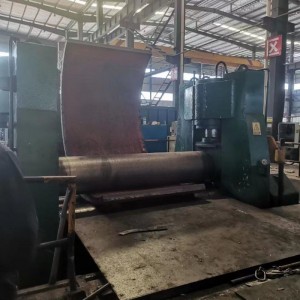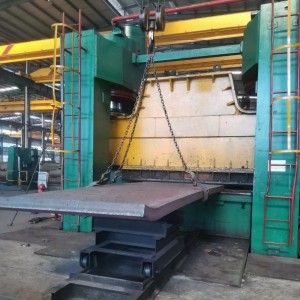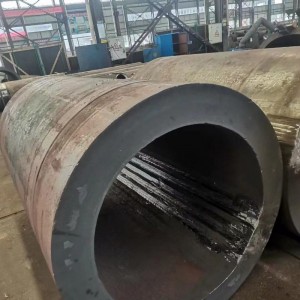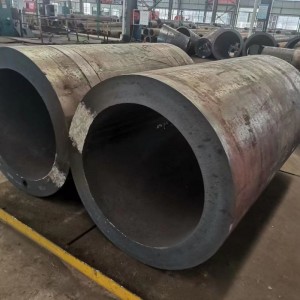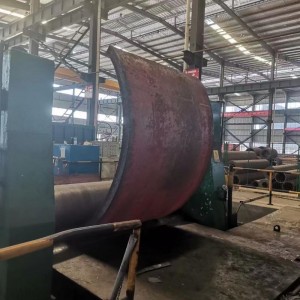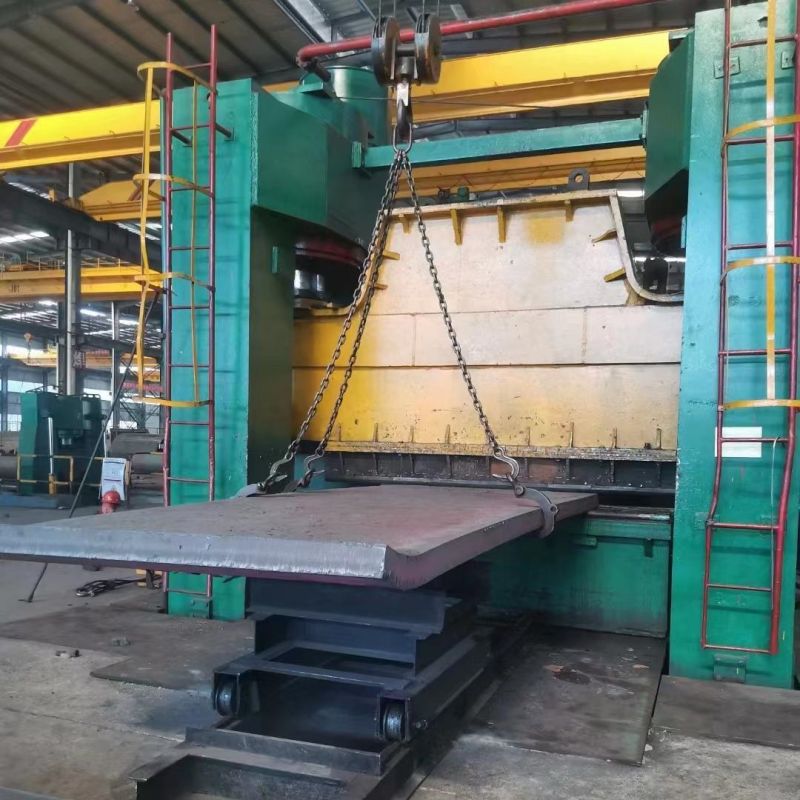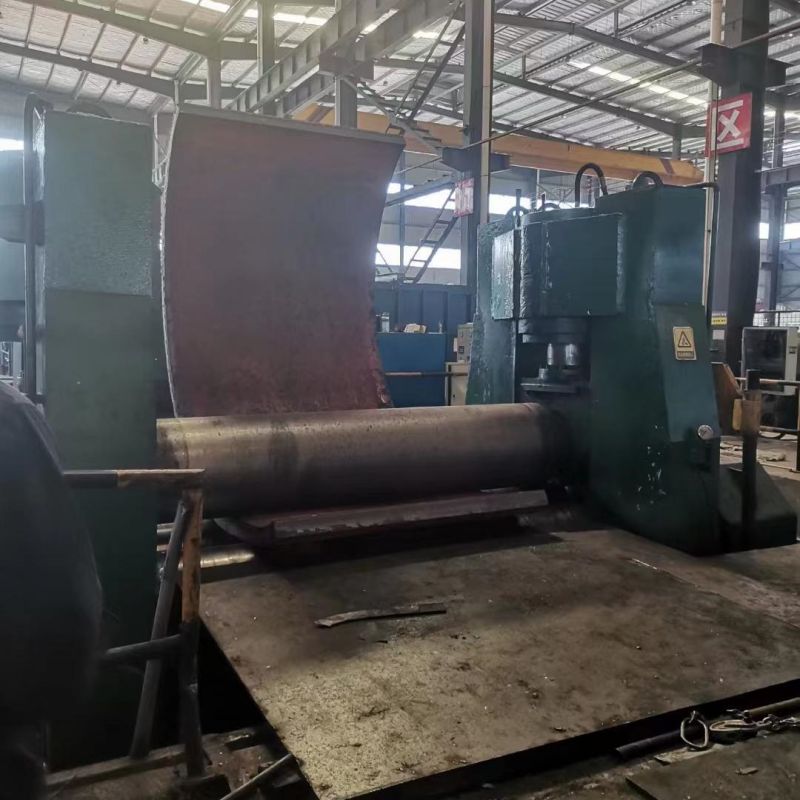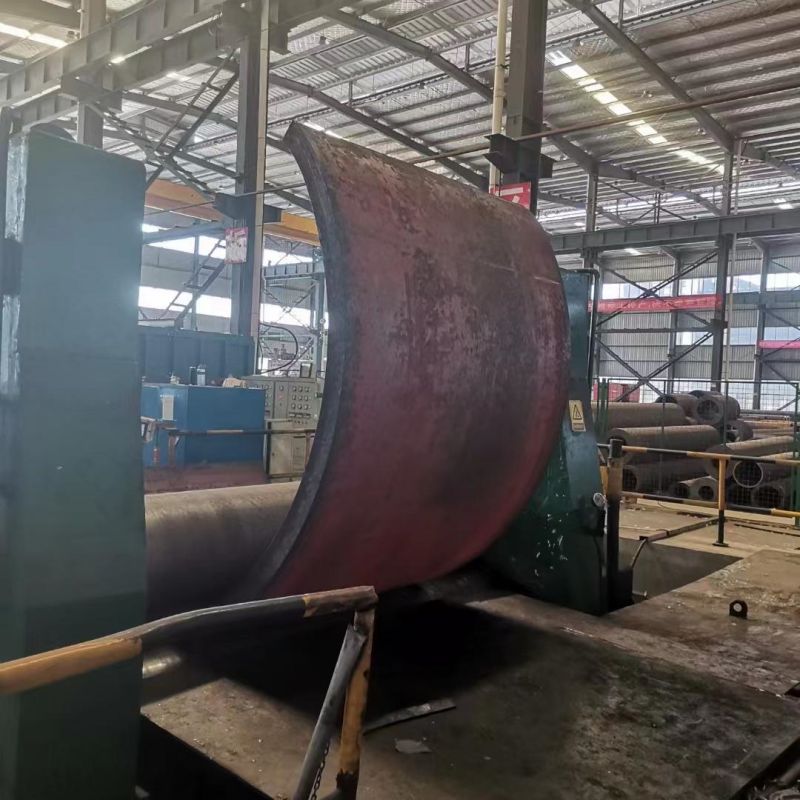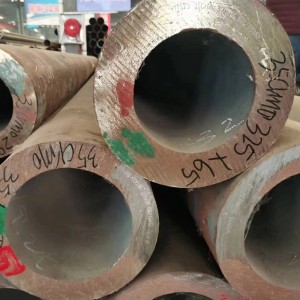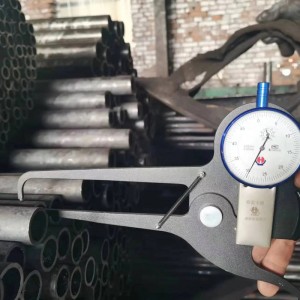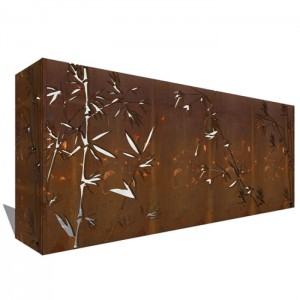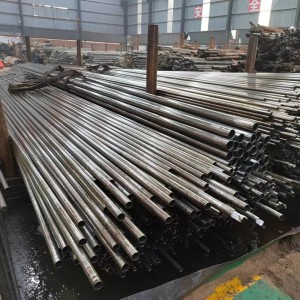1. Plate detection: after the steel plate used to manufacture large-diameter submerged arc welded straight seam steel pipe enters the production line, first conduct full plate ultrasonic inspection;
2. Edge milling: the two edges of the steel plate are milled on both sides by the edge milling machine to achieve the required plate width, plate edge parallelism and groove shape;
3. Pre bending: use the pre bending machine to pre bend the plate edge, so that the plate edge has the required curvature;
4. Forming: on the JCO forming machine, first press half of the pre bent steel plate into a "J" shape through multiple step stamping, then bend the other half of the steel plate into a "C" shape, and finally form an open "O" shape
5. Pre welding: make the formed straight seam welded steel pipe joint and use gas shielded welding (MAG) for continuous welding;
6. Internal welding: longitudinal multi wire submerged arc welding (up to four wires) is used to weld inside the straight seam steel pipe;
7. External welding: longitudinal multi wire submerged arc welding is used to weld the outside of the longitudinal submerged arc welded steel pipe;
8. Ultrasonic inspection I: 100% of the internal and external welds of the straight welded steel pipe and the base metal on both sides of the weld;
9. X-ray inspection I: 100% X-ray industrial television inspection shall be carried out for internal and external welds, and image processing system shall be adopted to ensure the sensitivity of flaw detection;
10. Diameter expansion: expand the full length of submerged arc welded straight seam steel pipe to improve the dimensional accuracy of steel pipe and improve the distribution of internal stress in steel pipe;
11. Hydrostatic test: inspect the expanded steel pipes one by one on the hydrostatic test machine to ensure that the steel pipes meet the test pressure required by the standard. The machine has the function of automatic recording and storage;
12. Chamfering: process the pipe end of the qualified steel pipe to meet the required groove size of the pipe end;
13. Ultrasonic inspection II: carry out ultrasonic inspection one by one again to check the possible defects of longitudinal welded steel pipes after diameter expansion and water pressure;
14. X-ray inspection II: X-ray industrial television inspection and pipe end weld photography shall be carried out for steel pipes after diameter expansion and hydrostatic test;
15. Magnetic particle inspection of pipe end: conduct this inspection to find pipe end defects;
16. Corrosion prevention and coating: the qualified steel pipe shall be subject to corrosion prevention and coating according to the user's requirements.

